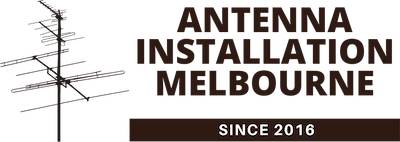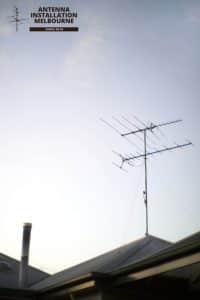When installing an digital TV antenna, there is a lot to think about or understand before you get sold one. Here is our list of items to think about.
Antenna feeder considerations
A radio antenna’s feeder is a vital part. It is designed to ensure the maximum power reaches the intended destination. This could be the antenna or the receiver. The efficiency of the entire antenna system will be reduced if power is lost. It is important to consider the cost and performance of the feeders when making a decision about an antenna.
- Select the best feeder for every situation: Cable types should be selected to ensure an acceptable loss on the frequencies being used. Feeder loss is usually quite low for frequencies below 30MHz and, subject to power limits, thinner coax can be used in many cases unless longer runs are needed. The loss increases as frequencies increase, so thicker and lower loss types are required. A low-loss cable is expensive, but it can help ensure that your antenna system performs to its maximum potential.
- When planning radio antenna installation, consider the installation of the feeder: All feeders should be installed correctly. If it’s coax cable or coaxial, for example, the cable should not be bent beyond its minimum radius. This can cause damage. It is not a good idea to run an open wire feeder through a home as it will be de-tuned by nearby objects and the losses will increase. The number of runs inside a building should be kept as low as possible
- Weatherproof all feeders if they are to be used outside: Coaxial cables should be treated with great care. Seal the end of coax to prevent moisture from entering. Moisture can cause losses as it absorbs power and, in the long term, it can lead to corrosion that will reduce the performance of coax.
Good Earth
A ground-mounted vertical antenna is an excellent solution to many HF ham radio antenna needs. For these and other radio antennas to work properly, they need an efficient ground or earth system. The ground system is crucial to the operation and performance of the radio antenna.
- Make sure the ground system is low in electrical resistance. A low electrical resistance is a requirement for any earthing or grounding system used for an antenna. To achieve this, ensure that the metal surface in contact with earth is as large as possible. You can use old copper pipes or electrical grounding rods.
- Make sure the ground system is low in RF resistance. While good electrical conductivity is needed for DC, the RF performance may be improved by using radials that are typically quarter wavelengths long and radiate outward from the center ground point. If compromises are necessary, they should be placed in the direction of optimum performance.
- Make sure the main connection for the grounding system is as near as possible to the feed of the antenna mounted on the ground: Grounding systems that use a long lead do not work well. The main connection of the ground system must be located as close as possible to the base.
- Take into account the conductivity of the soil: When choosing the location for the ground system, it is important to consider the conductivity. A dry sandy soil will give a poor result, whereas fertile moist soil will produce a better one. The earth connection should be placed in an area where it will be more effective. It may change the location of some vertical antennas or mean that ground-mounted systems are not viable.
Note about antenna RF Grounding
The grounding of an antenna is crucial to its operation. This is especially true if the antenna is a vertical monopole antenna, where the antenna includes the ground.
Read more about antenna RF ground.
Safety aspects of antennas
Safety is a major concern when installing any type of radio antenna, whether it’s for ham radio, or another purpose. Sometimes, antennas will be temporarily installed only to fall when the wind picks up. Even commercially manufactured antennas can be damaged if not installed properly, and even if they have been. It is important to take care that the antenna does not fall and cause injury.
Below are a few key points:
- Keep all objects as far as possible away from power lines. Included are masts and poles, antennas, wires or other antennas, feeders, ladders and all tools. Ideal distance between an antenna or a pole and the power line should be at least twice as high as the antenna or the pole.
- Make sure that the antennas you use are sturdy enough to withstand harsh weather conditions and not fall on people.
- Make sure that your antennas are in good condition and that any problems you may have can be resolved before they fall.
- Take all necessary precautions when climbing a ladder or a tower. Only people who are trained should climb towers, ladders, etc.
- In order to pass cables and feeders through walls and ceilings, holes are often required. Be careful when drilling holes to avoid damaging electrical wires or gas pipes. There are sensors that can detect metal pipes and wires buried within walls. These sensors are inexpensive and could prevent a catastrophe.
When installing antennas, it is important to keep in mind the safety of radio antenna design. Any risks will likely fail quickly, given the current weather conditions. Falling antennas are dangerous and can damage property and people. An antenna that is on the ground also cannot be used.
Ham radio enthusiasts can find experimenting with radio antennas fascinating. It is a rewarding hobby for many ham radio enthusiasts. The experience gained by setting up and experimenting with different types of antennas can also be extremely useful. It will add a lot to the guidelines summarized here. When a new installation performs better than the previous ones, it can be very rewarding. It is possible to improve the performance of a ham radio station. This can be seen by the many contacts made from a distance.
Considerations for interference
It is obvious that interference caused by ham radios and interference caused by them are of major importance. The location of the ham station’s antenna can have an impact on both interference aspects. This should be considered when choosing a location for your radio antenna.
Avoid placing the antenna near sources of interference. The majority of houses have many objects that are good noise sources. Even though televisions and computers have improved greatly in recent years, there is still some interference generated. This is especially true since many computers now come with networks. Other electrical appliances in the home can also cause interference. Electric drills, vacuum cleaners, mixers, and other similar appliances all contribute to electric noise. The noise radiates throughout the home, and the intensity decreases the farther away you are from the source. It is therefore best to keep the antenna away from the home. While this may not be possible in all cases, the interference level can be minimized by keeping your antenna away from certain sources of noise.
Even though domestic appliances are much more resistant to interference, a ham transmitter could still cause interference. The best way to reduce the chance of interference is by ensuring that the ham-radio antenna is located away from other equipment. The best way to achieve this is by keeping the antenna far away from domestic properties. The risk is lower for low-power transmitters. However, for high-power amateur radio stations, this issue can be more serious, especially if they use directive antennas that could beam towards domestic premises.
Antenna height
The height of a radio-antenna could be considered as part of the overall situation of the antenna. However, it is important and can have a significant impact on its performance. The various points are therefore considered separately.
The performance of an antenna is almost always improved by increasing its height, whether it’s used for VHF, UHF or HF.
General antenna situation
The location of the antenna is crucial to its operation. Location of the antenna is important because it will affect many aspects of its performance. Therefore, the type of antenna and the location must be decided together. There are a number of factors to consider when choosing an antenna:
Select a place where the antenna can “see all around”: For it to work at its best, it must “see all around”.
For this to happen, it must be kept clear of nearby objects which could act as screens. This will allow the maximum amount to reach the antenna or leave it without being absorbed by nearby objects.
Keep in mind that objects nearby can “detune”, an antenna. Even if the objects do not impact the visibility of the antenna, they can still detune it. An antenna can become less effective if it is operating away from its resonance point. It is especially important to do this for antennas cut to a specific length that don’t have the ability to be tuned on site. This can be caused by many things – electrical wiring and metal objects are the worst, but even trees will affect antenna performance in this manner. The effects can be seen within a few wavelengths. The closer the object is and the more conductivity it has, the greater effect.
Anchor points are needed at both ends of horizontal antennas. Consider whether any anchor points are already available. One possible anchor point is a chimney or another part of the house. Trees can also be placed in a convenient location, but pulley systems are needed to allow any wind movement to be taken into account without snapping antenna wires. It may also be possible to install a pole, or an antenna mast. This possibility can be considered along with its location. It is important to consider all options before making a decision.
Inside vs. outside: There are many situations where an internal radio antenna is necessary. External antennas are more effective because they can be placed further from any objects that could detune or cause the antenna to lose its tune. The amount of signal loss that an antenna in the home can cause is difficult to calculate. Signals will be affected by the roof or brickwork, especially if it’s wet. The loss amount will also be determined by the frequency. This will be greater for VHF and UHF signals.
If appropriate, use end insulators: Wires antennas (HF, etc.) often require fixing to ropes or other lines so they can be mounted in between the mounting points: towers and hoses. The antenna’s high voltage point is located at the end. It is important to insulate the ends to avoid signal loss. Small insulators can be easily purchased from antenna specialists, amateur radio dealers etc.
Matching antenna
It is important to match the antenna with the feeder if you are using radio transmitters and want them to work effectively. It is important to match the antenna with the feeder for both receiving and transmitting systems, although it may not be as critical. Radio frequency systems, such as antennas and feeders. Transmitters (i.e. All receivers have a specific impedance.
If they do not match, standing waves will be generated and power transfer will be reduced. A number of measures are available to ensure the system is correctly matched and operating.
For domestic systems, such as radio or TV installations, matching techniques are often used to make sure this is not a problem.
Use the VSWR meter in order to check that your radio antenna system works correctly. Most antennas can only operate within a narrow band.
Read our Frequently Asked Questions to learn more!


